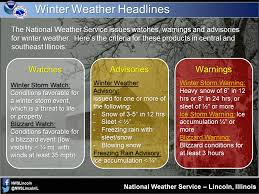
Introduction
As winter approaches, the threat of severe winter weather increases, making winter weather warnings a critical focus for communities across Canada. These warnings serve as essential alerts that provide the public with necessary information to prepare for potentially hazardous conditions, such as snowstorms, freezing rain, and extreme cold. Understanding these warnings is crucial for ensuring safety during the colder months, especially for vulnerable populations and those who must travel.
The Importance of Winter Weather Warnings
Winter weather warnings are issued by meteorological agencies based on an analysis of forecast models and current weather conditions. These alerts help individuals and communities prepare for adverse weather by advising on potential risks. For example, a winter storm warning indicates that significant snowfall or ice accumulation is expected, which could lead to dangerous travel conditions, power outages, and disruptions in daily life.
In Canada, regions with harsh winters, such as the Prairie Provinces and Northern Canada, are particularly vulnerable to severe winter weather. Awareness of these warnings not only ensures personal safety but also helps communities respond effectively, minimizing damage and injury during severe weather events. According to Environment and Climate Change Canada, approximately 24% of all weather-related incidents are attributed to winter storms.
Recent Events and Current Warnings
This winter season has already seen a number of significant winter weather warnings issued across various provinces. For instance, British Columbia experienced heavy snowfall at the beginning of December, resulting in multiple winter storm warnings. These warnings led to travel advisories and road closures, as authorities urged citizens to exercise caution and prepare for extended travel delays.
In the Atlantic provinces, freezing rain warnings were initiated as temperatures fluctuated, causing icy conditions on roadways. These warnings prompted local governments to mobilize snowplows and salt trucks more vigorously to ensure public safety. Furthermore, residents were advised to stay indoors during peak icy conditions to avoid accidents.
Conclusion
Winter weather warnings play an essential role in public safety during the cold months. By staying informed about these alerts, Canadians can take proactive measures to protect themselves and their families. As climate trends continue to shift, the intensity and frequency of winter storms may also increase, highlighting the importance of robust warning systems. Looking ahead, individuals should remain vigilant and follow forecasts closely, especially in regions prone to severe winter weather. Digital resources, such as apps and weather websites, have made it easier than ever to access important winter weather information in real time.



